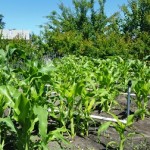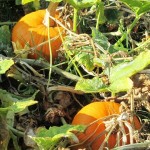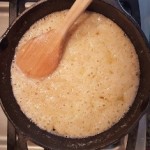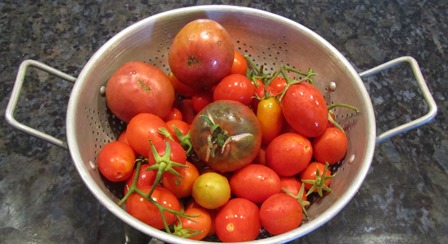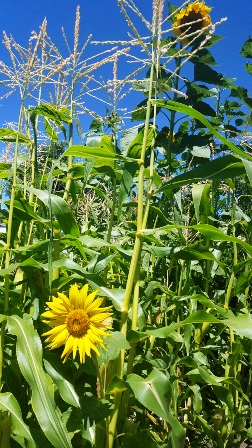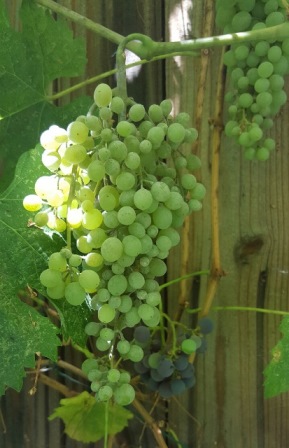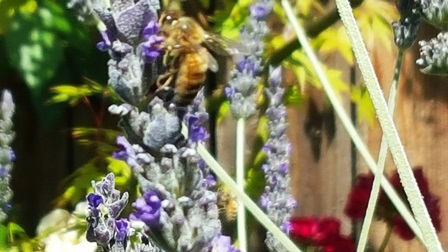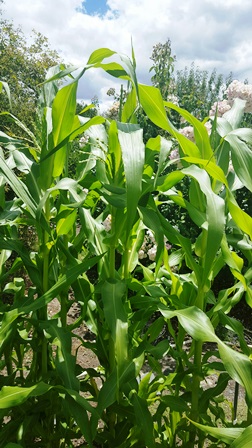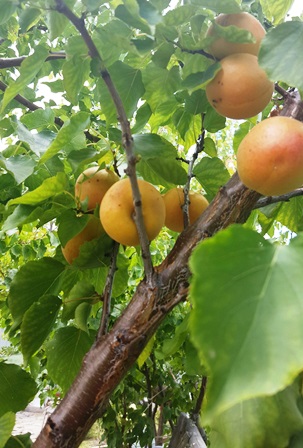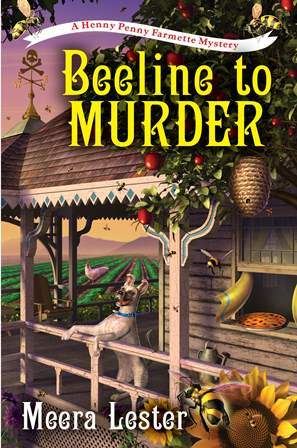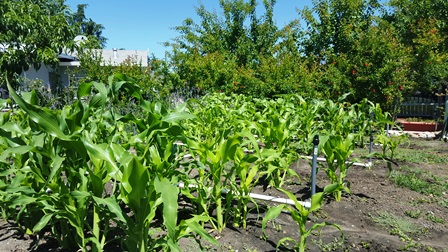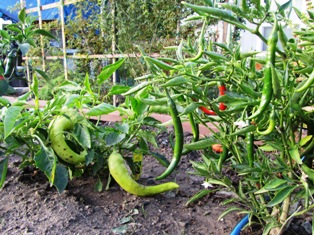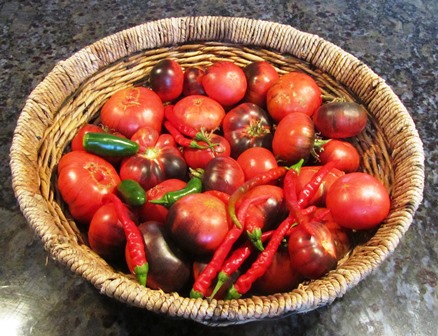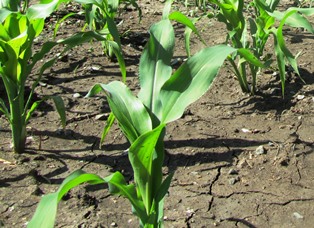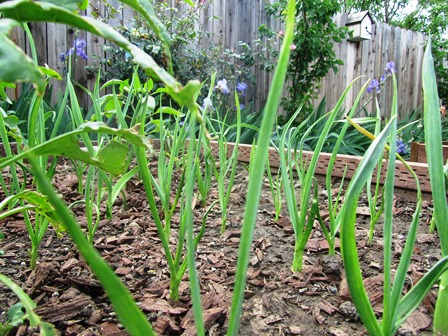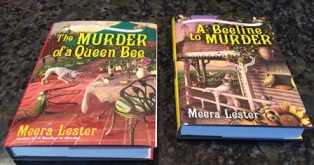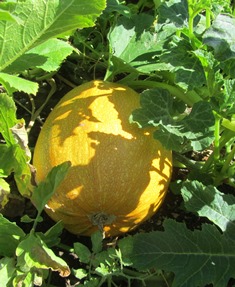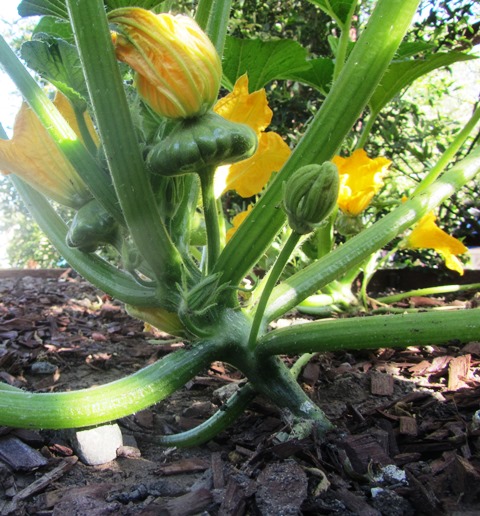Grow Something New in 2022
Seeds planted in soil trigger feelings in gardeners akin to giving birth. It’s all about birthing life in the garden. Reading about seeds is almost as good. Many of us consult seed catalogues throughout the winter in anticipation of spring planting. Often, we will stick to plants that have performed well for us.
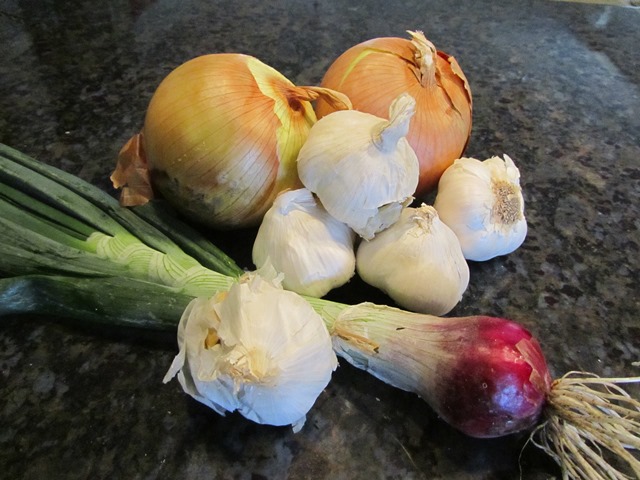
This year, I suggest trying something new, perhaps a type of heirloom cucumber known as Hmong Red, a lovely variety of squash known as Gelber-Englischer custard squash, or Zapotec Green corn. It’s doubtful you’ll find the above-mentioned seeds in your local DIY garden center. These seeds are heirlooms marketed through The Baker Creek Heirloom Seed Company, founded by Jere and Emilee Gettle, authors of The Heirloom Life Gardener.
Heirloom seeds go far beyond the heirloom tomato and other vegetables offered at local DIY outlets and garden centers. And Baker Creek isn’t the only seed company with a catalog and shops that sell heirlooms. But they’ve worked very hard at making the Baker Creek name synonymous with the grow-your-own-food revolution that focuses on seed not altered by scientists. In other words, the seed has not been genetically modified (GMO).
Thousands of types of heirloom vegetable seeds are available when you know where to look for them. Search for catalogues online. Among others, check out: https://www.seedsavers.org/catalog, https://www.rareseeds.com, and https://www.edenbrothers.com/store/heirloom_seeds.html
Add a Secret Ingredient to Kick-start Your Compost Pile
The leaves of my plum and cherry trees are beginning to drop. The fig leaves have dried to a crisp and are also falling. I’ve got pumpkin and squash vines and stalks of corn pulled and lying in piles in the garden.
This dead, particulate organic matter (detritus) in my garden is too good to throw in the green recycle bin for the city to compost. By composting it myself, I’ll save the money I might spend on buying compost next year.
If your garden has a pile or two of of similar detritus but you’ve had trouble getting it to break down into compost, you might be missing a secret ingredient.
Add one to two cups of a nitrogen-rich garden product like blood meal, bone meal, or cottonseed meal–all are available from your local nursery or garden center.
Follow these simple steps.
1. Dump a wheelbarrow load of leaves where you will be composting this fall and winter. I use a rectangular raised bed.
2. From a cup of blood meal, generously sprinkle the meal onto the leaves.
3. Layer onto the pile grass clippings, pumpkin and squash vines, corn cobs, chicken house straw, dried oats, weeds, and other biomass material.
4. Add more blood meal, more leaves, and more organic material.
5. Sprinkle the remaining blood meal from your cup onto the compost pile and then wet it using a garden hose.
6. Cover with plastic sheeting.
The compost pile generates heat as the plant material breaks down. Thoroughly turn at two or three week intervals. Keep the pile moist (not drenched) and covered.
Using this method, you can expect to have lovely nutrient-rich compost to use on your spring flower and vegetable gardens.
___________________________________________________________________
If you enjoy reading about gardening topics and you are a mystery lover, check out my Henny Penny Farmette series of mysteries from Kensington Publishing. Each charming novel features a wholesome whodunnit along with delicious recipes and farming facts and tips.
Click here to see more: http://tinyurl.com/ya5vhhpm
Join me for “Coffee and Conversation” at Towne Center Books in Pleasanton, The date is Wednesday, October 18, 2017, at 11:00 a.m. The address is: 555 Main Street, Pleasanton, California. Phone is (925) 846-8826.
I’ll be sharing information about my farmette, my mystery-writing process, and my newest novel, A HIVE OF HOMICIDES.
Celebrating the Fourth–Hankering For Nostalgia
On the farm where I grew up in central Missouri, we celebrated the Fourth of July with a fish fry. We caught blue gill, bass, crappie, and catfish in my grandfather’s stocked ponds or from nearby Perche Creek.
After my brother, cousins, and I played games until dark and then chased fireflies, my grandmother would set out dessert–a simple blackberry pie, shortcake and berries with homemade ice cream, or a pineapple upside down cake. A grownup would surprise us kids with sparklers that we would light and wave as we ran around in the dark.
Feeling nostalgic for those old days and ways of celebrating, I’m going to shuck and cook corn on the cob and grill some salmon with fresh veggies from the garden for this–our eighth celebration of this holiday on the farmette. There’s a ton of summer squash that I’ll douse with olive oil and sprinkle with seasoning before grilling.
For the salmon, I make a easy-peasy mango-lime-cilantro salsa. Chop red onion and red and green bell pepper. Cube slices of fresh mango. Take a handful of cilantro that’s been tightly rolled and chop it into ribbons. Mix everything together, sprinkle with sugar, and generously drizzled with fresh lime juice. Serve well chilled over the grilled salmon.
I’ve already whipped up a pineapple upside down cake and baked it in my 10-inch cast iron skillet. To save time, I used a yellow cake mix and added a dash of rum and pineapple juice for flavor. Recipe is below.
QUICK PINEAPPLE UPSIDE DOWN CAKE
Ingredients:
1/2 cup plus 2 Tablespoons butter
1 1/4 cups sugar
7-8 slices of canned pineapple
7-8 maraschino cherries
1 box yellow cake mix
1 Tablespoon dark rum
1/8 cup pineapple juice
Directions:
Preheat oven to 350 degrees Fahrenheit
In a cast iron skillet over medium heat, melt the butter. Add the sugar and stir until the sugar turns light brown (roughly 5 to 7 minutes). Remove from heat. Carefully lay in the pineapple slices. Place a cherry in the center of each fruit ring.
Make the cake according to directions on the box. Add the rum to the batter. Pour over the pineapple slices in the skillet.
Place the skillet on the middle rack in the oven and bake the cake at 350 for 30-40 minutes. Guard against over browning of the top. If necessary, lay a layer of aluminum foil over the cake near the end of the bake time. Use a knife around the cake edges to loosen from the skillet. Turn upside down onto a cake plate. Enjoy.
_______________________________________________________________
If you’re interested in farmette topics and storytelling, check out my Henny Penny Farmette series of mysteries. All three books in the series are available in numerous formats and can be ordered from Amazon, Barnes and Noble, and elsewhere online as well as from traditional bookstores everywhere.
These cozy mysteries make great summer reading and they include delicious recipes, tips for keeping bees and chickens, and facts and tidbits about growing heirloom vegetables and herbs.
Please see more at http://tinyurl.com/ya5vhhpm
What’s Growing in the July Garden?
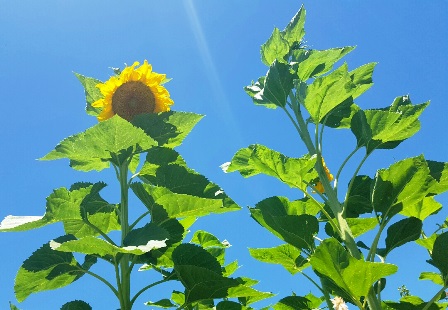
Sunflowers are native to North America and were taken to Europe in the 16th century; however, they date back to roughly 3,000 B.C. Honeybees love sunflowers.
Towering above the squash and lavender in my garden are rows of green corn stalks bearing ears of sweet, plump kernels. Snaking along the rows at the base of the cornstalks are vines laden with butternut squash and Armenian cucumber.
There are ripe tomatoes, too, especially the prolific heirloom–Red Beefsteak. I love cutting up some of these fresh, thin-skin tomatoes and combining them with basil, olive oil, grated cheese, and pine nuts as a topping for pasta. Add some grilled, seasoned chicken and you’ve got a quick and delicious summer lunch.
Zucchini and yellow squash sport large, showy blooms and are producing like crazy this month. While you can harvest and eat the blooms, we prefer the squash. Zucchini is delicious grilled or tossed with rosemary potatoes and onions or made into a French lentil and tomato salad (see recipe from last week’s posting).
Growing on vines trained over a wall and on supports, the green table grapes are beginning to swell. The taste is still a little tart, but will sweeten with the passage of another couple of weeks.
* * *
If you enjoy reading about farmette topics (including gardening, beekeeping, and delicious recipes), check out my cozy mysteries A BEELINE TO MURDER and also THE MURDER OF A QUEEN BEE in the Henny Penny Farmette series (from Kensington Publishing).
These novels are available through online retailers such as Amazon, Barnes & Noble, Kobo Books, and Walmart as well as from traditional bookstores everywhere.
Now available in mass market paperback, this debut novel launched the Henny Penny Farmette series of mysteries and sold out its first press run.
COMING SOON: The second cozy mystery in the Henny Penny Farmette series, available Sept. 29, 2016
Time Spent in a Potager Garden Renews the Spirit
With the official start of summer a few days away, I find myself leaving my computer and the scene I’m writing on my third novel to take a break in the garden. Alive with honeybees, bumblebees, butterflies, and hummingbirds, the garden is perfect place for a respite and a cup of tea.
Quite like a potager garden that includes flowers, herbs, trees, vegetables, berries, and grapes, mine also includes a patch of corn.
Embroidered around the edges of the garden, there are climbing roses, fruit trees, and lots of lavender. Along the rows of lavender, there are peach trees with fruit the size of softballs and five pomegranate trees, laden with blooms and new fruit.
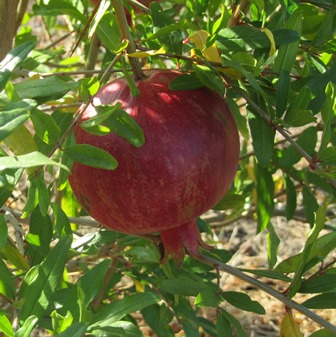
The pomegranates aren’t quite this large yet, but the trees have so much fruit, they’ll have to be thinned.
As I meander, I discover the trees of red and yellow plums have begun to drop their ripe fruit. I’ve got to make those plums into jelly or jam and ditto on the apricots.
But that work will have to wait until my late afternoon tea break. My novel won’t write itself. Still, the time I spend in the garden revitalizes my spirit and refreshes my brain cells, enabling me to return to the computer and the scene I’m writing with renewed vision and vigor.
* * *
If you enjoy reading about gardening, keeping bees, raising chickens, and creating delicious recipes, check out my novels from Kensington Publishing.
The Henny Penny Farmette series of cozy mysteries are available at Amazon, Barnes and Noble, Kobo Books, Walmart, and other online and traditional bookstores everywhere. Available in hardcover, Kindle, and mass market paperback formats.
Memorial Day Pleasures–A Good Book and Tasty Grilling
Memorial Day weekend marks the unofficial start to summer, which means time to grab a little reading pleasure and sample some locally grown produce to go with whatever you’re putting on the grill. And don’t forget dessert. My mind is already spinning with ideas.
Hanging out in the hammock calls for a book, so if you haven’t already snagged a copy of A BEELINE TO MURDER, get your e-book today through May 30 for a great price from KOBO Books. Here’s the link: https://store.kobobooks.com/en-us/ebook/a-beeline-to-murder.
For your grilling pleasure, choose some sweet corn to grill to go with the barbecue ribs or chicken. Here on the Henny Penny Farmette, our corn won’t be ready until July, so we’re going to pick some up locally grown corn at the farmers’ market in downtown Concord.
We’ve got more than a dozen heirloom tomato plants with fruit on them. Vine-ripened heirloom tomatoes for a cool Caprese salad are also available from the farmers’ market. And as I consider salads for our weekend meals, a red-skin potato with pesto and shredded basil leaves sounds almost as good as a conventional country style potato salad. But then again, I’d love a fresh broccoli-carrot salad with an Asian sesame-seed dressing or a simple cold slaw.
We’ve got plenty of zucchini and sweet snap peas in my garden that are ready to eat. These taste divine tossed into a garlic and butter shrimp pasta with a little shaved Parmesan cheese. Add a nice chardonnay or a traditional Cuban lime mojito along with some fresh baked bread and you’re ready to head for the table in the orchard.

Sunflower-design bundt pan makes this cake pretty enough to eat without the the caramelized pecan frosting.
Desserts are on my mind too–a simple cake or a plate of berries or watermelon rings my chime. But then again, with company, I could bake some linzer torte cookies with home-canned apricot jam. Or make a rhubarb-strawberry pie. The rhubarb stalks are cherry red and ready to cut.
These are some of my ideas of simple pleasures for Memorial Day to get you thinking about yours. Wishing you a peaceful, blessed Memorial Day weekend.
* * *
If you enjoy reading about keeping bees and chickens, raising heirloom vegetables and fruits, and other aspects of modern farmette life, check out my series of cozy mysteries from Kensington Publishing (New York).
A BEELINE TO MURDER, available in hardcover, will be released in paperback format in October. THE MURDER OF A QUEEN BEE will be released October 1, 2016. Find these titles on Amazon.com, BarnesandNoble.com, Walmart.com and other online bookstores and retailers as well as in traditional bookstores everywhere.
Planting the Spring Garden
Winter brought us lots of rain and now the ground has warmed up and is ready to receive the heirloom seedlings of our favorite vegetables and herbs.
Tomatoes won’t set fruit until the nighttime temps hover around 55 degrees Fahrenheit, but I tucked in several seedlings of heirloom varieties (Bradley, Cherokee Purple, and Red Beefsteak). Victory Seeds offers a nice selection of open-pollinated, non GMO, rare heirloom seeds for a variety of tomatoes. See, http://www.victoryseeds.com/tomato.html
While I was digging, my neighbor’s bees decided to swarm. So I stopped gardening to check on my own bees. They’ve been humming like a truck engine, and there has been a lot of bee traffic. Concerned that they might swarm, I set aside my shovel and got out the swarm catcher, the lemon oil, and the hand pump sprayer. I positioned the swarm catcher in a tree across the yard, sprayed the tree with lemon oil, and went back to gardening.
I’ve readied a patch of ground for the sweet corn, squash, peppers, and beans. Also, in a large-size planter pot, I’ve tucked in flat Italian parsley, Italian oregano, dill, chives, and sweet basil. The patio pot will remain near the kitchen slider in full sun so I have culinary herbs at the ready when I need them.
The early sweet peas are taking off now and the garlic and onions I put in the garden last fall are about a foot high. The vegetables and herbs I plant now will provide me with plenty of nutritious offerings right up until late fall–one of the many reasons to plant a garden in spring.
Enjoy this blog? Check out my Henny Penny Farmette novels, available online and in traditional bookstores everywhere.
Visit a Farm in the Fall For a U-Pick Experience
The Henny Penny Farmette is about a half hour away from Brentwood. There are at least fifty farms in and around Brentwood that offer families a U-Pick experience. The city is located in the eastern region of the San Francisco Bay Area.
Although Brentwood has had a post office since 1878, the city today is largely residential. That said, there are many actively producing farms and preserved lands around the pockets of community. The area has a semi-arid, Mediterranean climate and is situated on the alluvial plain of the Sacramento-San Joaquin Delta.
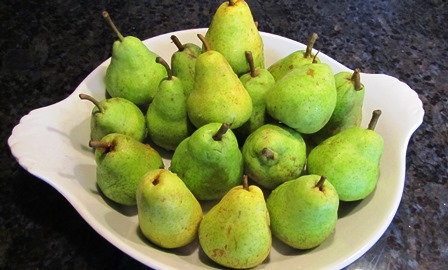
To bring out the maximum sweetness of pears, place them in a paper bag for two days in a kitchen cupboard
Many of the farms permit family picking of produce and tree crops. Some of the crops available for picking through October include apples, corn, figs, green beans, onions, peppers, pears, persimmons, pomegranates, pumpkins, squash, strawberries, and tomatoes. Additionally, walnuts, pistachios, and almonds are available year-round at some of the farm stands. There are also wineries and vineyards in the region.
As you drive around the area, look for a Brentwood Harvest Time sign as an indicator for a farm. There will be a number on the sign that coordinates to a name of a farm with that same number on a handily map that you can get at http://www.harvest4you.com. In July, the city hosts a harvest festival for the entire family. It features tractor rides and corn shucking and eating contests, among other activities.
Finally, if Christmas at your house wouldn’t be the same without a live tree, you can find Christmas tree farms in and around Brentwood as well on the Harvest4you.com website. Check it out.
U-pick guidelines as listed on the map include the following rules.
1. No climbing or damaging trees
2. Children are not allowed on ladders.
3. You must buy what you pick.
4. Check produce for ripeness before picking it.
5. Do not throw fruit.
6. Do not litter.
Protecting Your Backyard Flock in a Heat Wave
I lost a chicken this morning despite taking measures to protect her from the deadly heat wave we’ve been having here in the Bay Area. The last thing someone attached to their hens ever wants to see is one of her precious little girls gone. Mine was a Silver Laced Wyandotte (who leaves behind a sister) and five other hens with whom she was raised.

The Silver Laced Wyandotte (black-and-white) hen in the foreground succumbed to the extreme heat sometime during the night
Our farmette sits in the east bay hills and too far inland from the San Francisco Bay or the delta (which flows to Sacramento) to gain much benefit from cooling breezes off the ocean. We’ve had triple digit temps on the farmette for days.
I put out extra water basins for my chickens, kept their doors open in the chicken house at night (there is a wire run with a wire ceiling to protect them when they’d rather roost outside), and fed them frozen corn, cool seedless watermelon treats, and chilled grapes.
The chicken house has windows that I keep open (they have reinforced wire over the screens). I reduced the amount of litter on the floor (I use ground corn cob) since it could hold the heat.
I haven’t install a fogging system or fans, but I might if this heat keeps up.
The only telltale sign that my hen was in trouble was that she seemed to exhibit lethargy and to have lost weight (although it was difficult to tell under all her feathers).
Her comb had turned slightly pale and seemed to have shrunk in the last 24 hours. When I check on her last night she was turning herself to face the wall. Not a good sign since, in my experience, I’ve seen chickens do this before they pass away.
Some strategies for helping backyard chickens survive extreme heat include the following tips.
Eight Strategies to Help Chickens Beat the Heat
1. Make sure windows of chicken houses face north to south to allow breezes to blow through, rather than face east to west (rising and setting sun).
2. Keep litter on the chicken house floor low (1 to 2 inches is sufficient).
3. Position your chicken house under a tree, if possible, where the structure receives shade.
4. Make certain you have several watering dispensers (placed in the shade) with clean, fresh water every day during hot weather.
5. Add ice cubes to the watering canisters.
6. Put out treats such as bowls of frozen corn and cool, seedless watermelon, and chilled grapes or blueberries.
7. Use a fan, if necessary to remove heat from the chicken house.
8. As an emergency measure for a chicken that looks distressed, dip her in cool water.
From Garden to Table, Easy-to-Grow Squash
I love summer squash, tossed into rosemary potatoes and served up with eggs and sausage on a Sunday morning; or, grilled with fish, or added to a freshly-made pasta sauce. Best of all, you can have it fresh, from your kitchen garden to your table, as squash is one of the easiest vegetables to grow. Squash is a super food, high in antioxidants, fiber, and Vitamin A.
Squash is one of the Three Sisters (corn and climbing beans being the other two), grown together as companion plants in the tradition of certain groups of Native Americans who planted these vegetables. A fourth sister might be the Cleome serrulata, the Rocky Mountain bee plant to attract pollinators for the beans and squash.
There is a scientific basis for growing these three together. The squash grows fairly large and spreads out, blocking weeds. The beans provide nitrogen to the soil. The corn shoots up a stalk that provides the support the beans need to climb. The three plants benefit each other.
Each year, I plant both summer squash and winter varieties such as butternut and pumpkin that have hard shells and store longer. All types of squash are easy to grow. They just need sun, water, and room. They aren’t fussy about soil.
Summer squash includes zucchini, yellow squash, and scalloped (or round) squash. Autumn/winter varieties require a longer growing period (up to 120 days) and include butternut, acorn, hubbard, and pumpkin.
Growing Tips:
Choose a well-drained, sunny spot in the garden for your squash.
Plant three seeds to a hill (roughly six inches apart).
When the squash are about a foot tall, thin to the healthiest seedling.
Water two to three times each week.
Harvest summer squash when still young; if left on the vine, the squash becomes tough.
 Facebook
Facebook Goodreads
Goodreads LinkedIn
LinkedIn Meera Lester
Meera Lester Twitter
Twitter





